|
Felin Ganol is a working watermill on the River Wyre
in Llanrhydstud, Ceredigion, that we visited on our
substitute Welsh holiday. It is one of only two
commercial working water-powered cornmills with
original machinery in West Wales. (The other is Y
Felin at St Dogmaels, which HMG visited in 2017 –
see newsletter 118. The miller Michael Hall has
since died, but his daughter has taken over.)
|
|
 |
The restoration of the mill began accidentally at
Felin Ganol in 2007 when the new owners of the mill
house (who has bought it because they liked the
garden) became interested in the mill. Step by step
they first got the wheel turning, and encouraged by
that, thought that they should try to get the stones
working again. And they did! |
|
The pond was refilled in 2008 and it supplies water
to the overshot wheel. Its original stone axle
bearing had split in two due to excess wear but it
has been replaced by a new one.
Inside the mill are the unrestored remains of a
governor and an electric control board for a
turbine, which was used in the mill’s latter years.
|
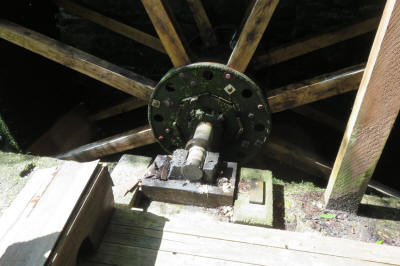
|
 |
 |
|
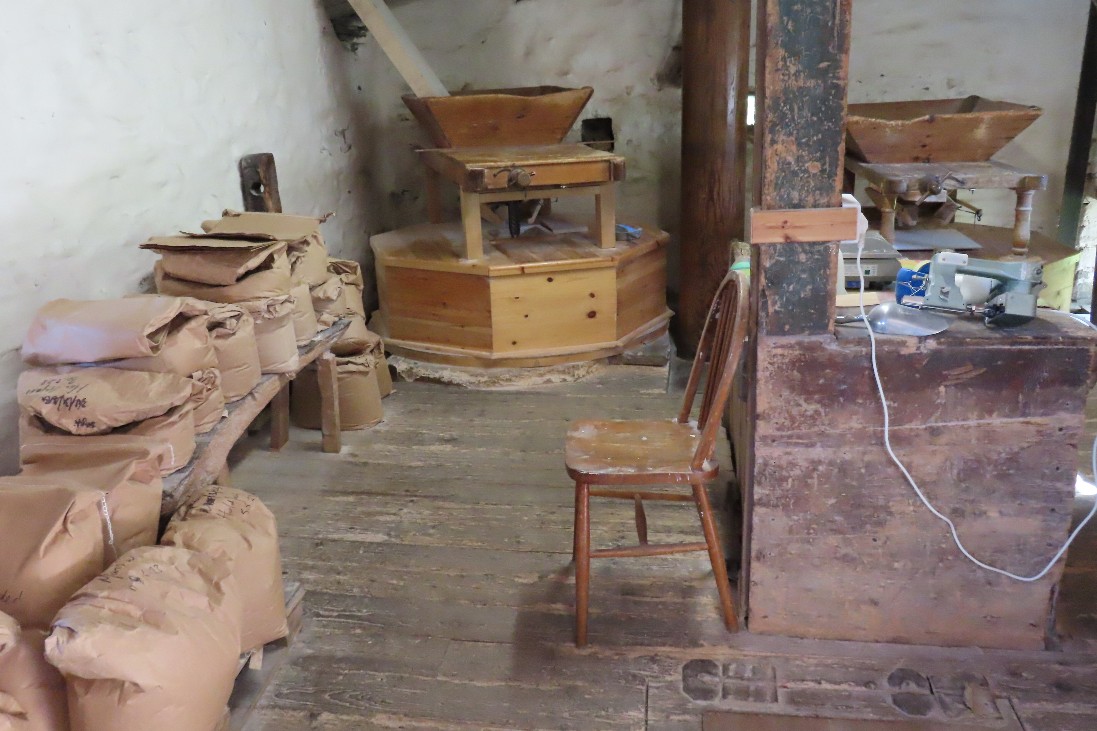
|
In February 2009 one pair of the original stones
(3ft 6in French buhr) turned again to mill wholemeal
flour. They now work alongside a second pair of
larger French buhr stones which were acquired to
replace the older pair of Anglesey stones, which had
been used for animal feed and oats.
So now,
after 50 years of lying idle, there are two pairs of
stones which turn most days, grinding organically
grown grains supplied by local farmers to produce a
range of stoneground flours, which are on sale from
several outlets |
|
As mill owner and miller Anne Parry pointed out, one
of
the benefits of traditional milling on a small scale
is the ability to mill distinct batches of unusual
grains (like
Hen Gymru
on the lefthand of the two bags of flour above) and
experience their unique flavours and baking
potential.
The owners are now members of the Traditional Corn
Millers Guild.
Inside the mill there are several modifications
which have been necessary to meet modern food
handling requirements. The most noticeable of these
changes are the mesh-fronted rodent-proof storage
bins for grain.
|
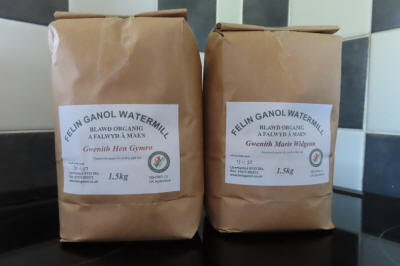 |
|
 |
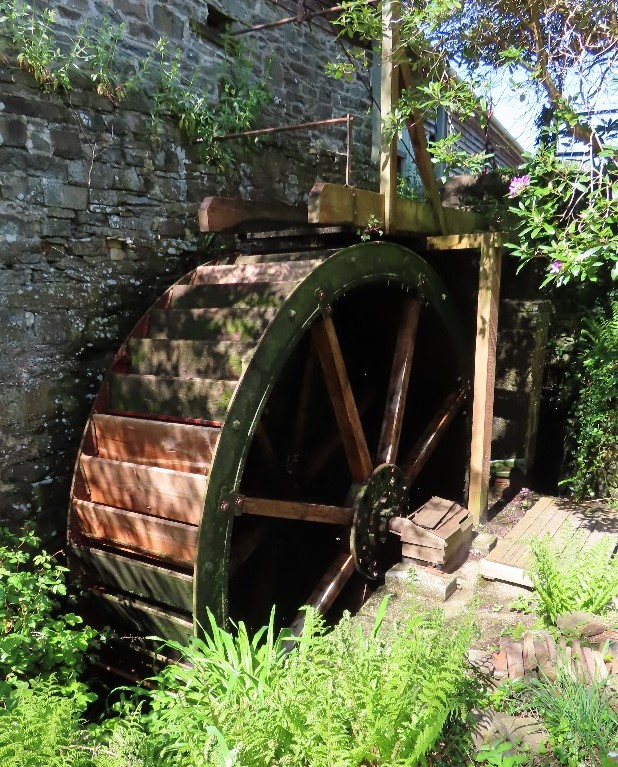
|
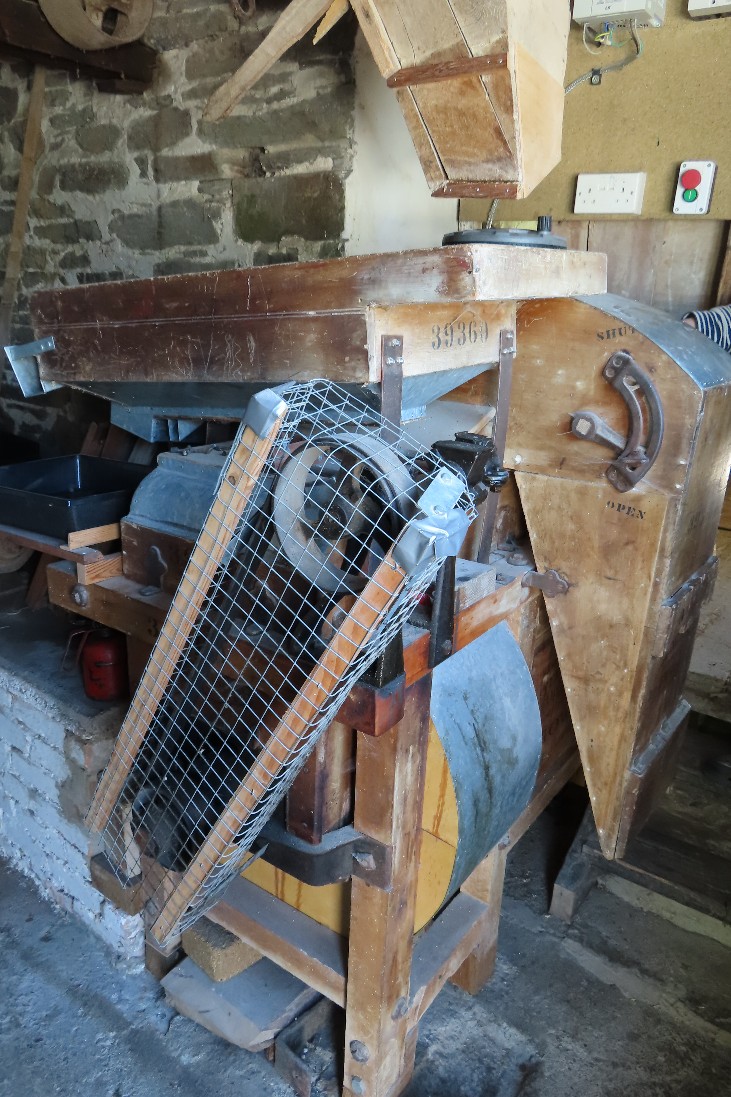 |
There is also a refurbished Eureka cleaner (left)
and a traditional wire machine (below)
.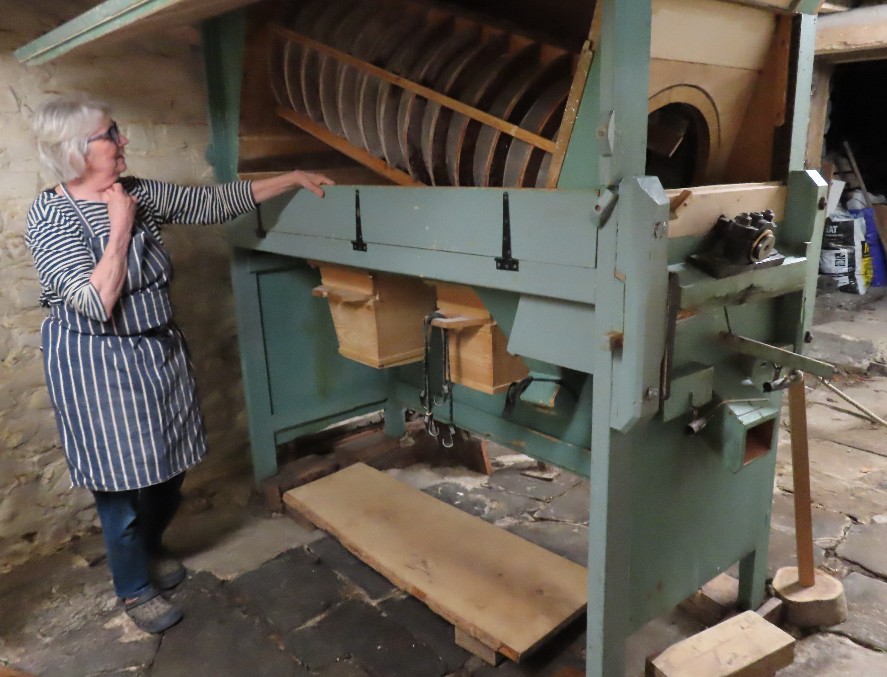 |

The remains of an unused sack hoist contrast with
the modern electric motor host and repurposed bread
tray. |
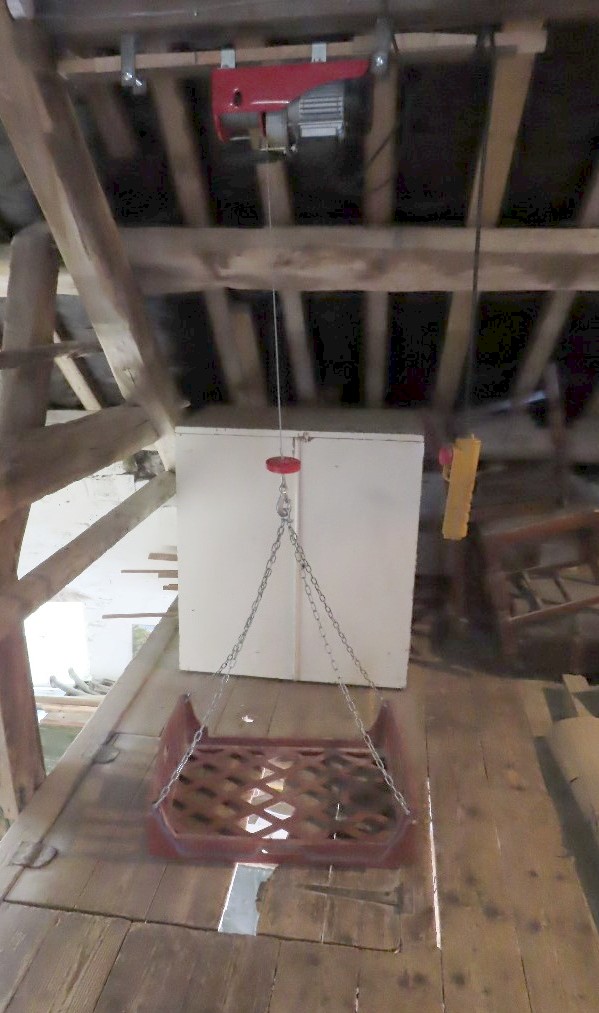 |
|
The mill is not easy to find in a maze of new
houses, but the comment ‘by the ford’ on the website
finally got us there. It is now open to the public
by appointment, but when we poked our noses in the
door by chance Anne was more than happy to show us
round and tell us about all the work they had done
to get the mill working again.
For more information, see
https://felinganol.co.uk/
|
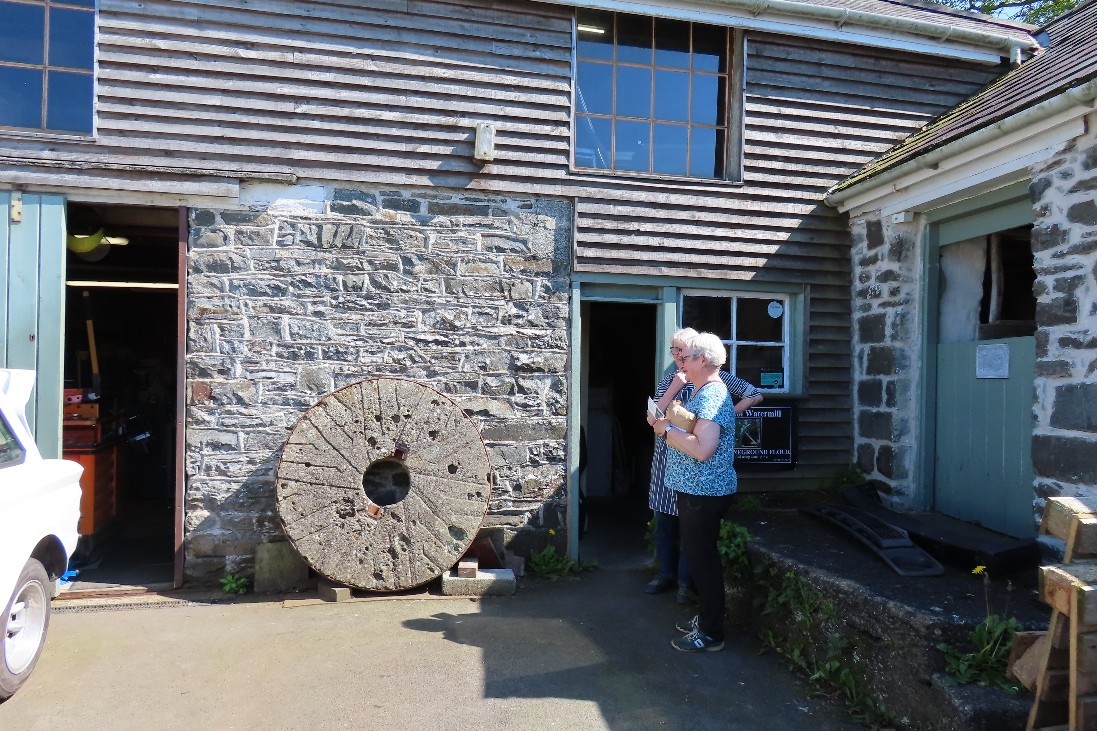 |
